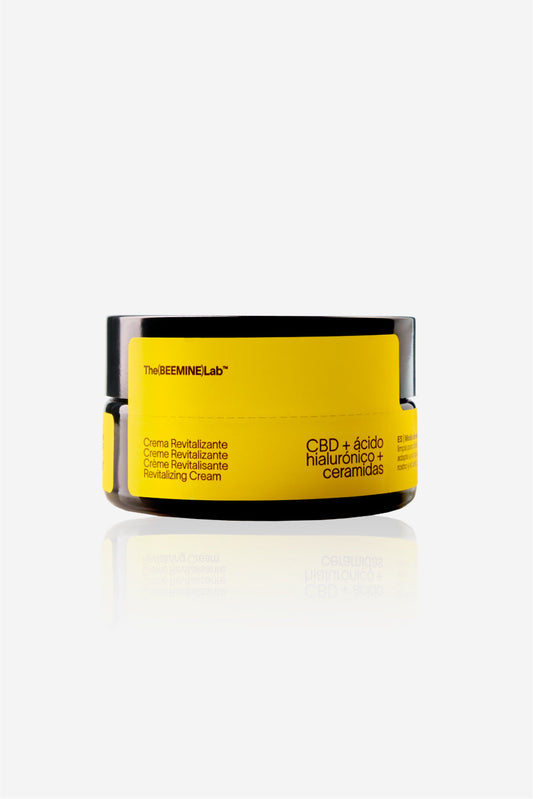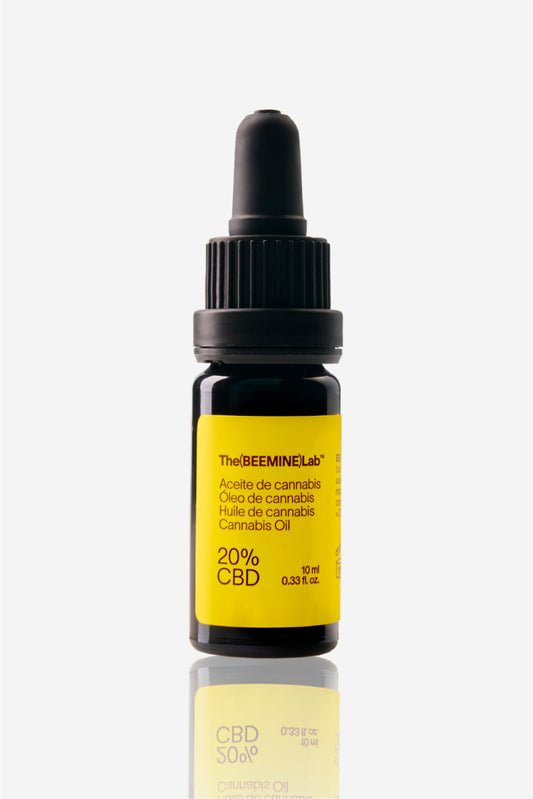What is sensitive skin? Who does it affect?
Sensitive or reactive skin has a lower tolerance threshold for any stimulus of various kinds . In other words, the hypersensitivity that characterizes this type of skin causes the skin barrier to tolerate factors less well than normal skin would tolerate without problems. Having sensitive skin is very common, affecting 1/3 of the adult population . 60% of women suffer from this skin condition, while men represent only 40% . In addition, it has been observed that people with a light skin phototype have a greater predisposition to develop this sensitivity and it is usually a clinical manifestation of some associated pathology such as rosacea, atopic dermatitis or seborrheic dermatitis, among many others. It is also important to note that any type of skin, whether dry, oily or combination, can become sensitive and symptoms may manifest all the time or appear when the skin is exposed to different external or internal factors (1)(2).How to recognize sensitive skin? Causes that produce it
This skin has certain characteristics that distinguish it from normal skin and it is important to clarify that it is not a skin type , but rather a skin condition . It is characterized by unpleasant sensations such as stinging , tightness , burning or stinging , which are sometimes associated with dryness and redness . The main causes are, firstly, an alteration in the barrier function of the skin (epidermal layer) which leads to a greater loss of transepidermal water (TEWL) and, as a consequence, causes greater dehydration and dryness of the skin. In addition, this also favours the penetration of external agents that can be harmful because the skin is not strong enough to resist this type of exposure, causing irritation and itching . Secondly, some studies have shown that in this type of skin there is an alteration in the neurosensory activity of the cutaneous nerves that causes the nerve terminals to become hypersensitive and begin to trigger pain signals in response to harmless stimuli, also releasing cytokines (protein substances released by skin cells) that promote inflammatory processes in the skin and cause the appearance of redness and burning (2)(3) .Factors that affect skin sensitivity
Sensitive skin symptoms can appear due to external or internal factors and the best way to prevent them is by avoiding exposure to these types of factors or by strengthening and caring for the skin both inside and out. Let 's start by talking about external factors such as sudden changes in temperature . We must try to minimize these changes and be especially careful with excessive heat and cold, as this could trigger the release of histamine and cause skin discomfort such as burning or stinging. To do this, it is important to avoid long showers and preferably use lukewarm water so that the skin is not so damaged. Another factor that is very harmful to sensitive skin is the sun. Ultraviolet radiation from sunlight causes oxidative stress (formation of free radicals) and inflammation, which further aggravates the symptoms of this condition. One way to avoid this factor is to apply SPF50+ sun protection daily for maximum coverage and to avoid direct exposure to the sun. The use of inappropriate cosmetic formulas can increase the symptoms of this skin, as they contain some components that can irritate and be aggravating factors. Therefore, it is important to choose the cosmetics to be used appropriately and they must contain active ingredients compatible with sensitive skin. As for internal factors, hormonal changes related to the menstrual cycle or the menopause period can produce effects on the skin such as redness and tightness, and increase its sensitivity. Therefore, it is very important to use cosmetics that adapt to the needs of the skin at these times and to have good care and rest habits. On the other hand, factors such as stress or diet have a significant influence on skin sensitivity. When a person is stressed, the nerve endings in the skin react by dilating the blood vessels in the face and neck, which causes hot flashes and burning. One way to avoid this is to control stress and practice some meditation and relaxation exercises. It has also been shown that consuming alcohol and spicy foods can promote the symptoms of sensitive skin, as they dilate the blood vessels causing redness and alcohol also acts as a diuretic, promoting dryness of the skin and making it more vulnerable to external factors. Therefore, avoiding these types of foods and substances could reduce these effects on the skin and not make the situation even worse (4) .Care and prevention of sensitive skin
Caring for sensitive skin is a challenge for both the dermatologist and the patient. The fact that there are many and varied factors and products that cause these subjective responses typical of sensitive skin and that each patient reacts differently to each of them makes the management of sensitive skin complicated. In any case, any treatment must involve avoiding, as far as possible, those agents that trigger this response and maintaining good skin care habits. It is advisable to follow a series of guidelines for the care and prevention of sensitive skin response:Maintain good skin hydration
Moisturizing the skin is extremely important to maintain the barrier function and prevent transepidermal water loss (TEWL). Good hydration provides greater luminosity and a better appearance to the skin, but also strengthens it against elements and external aggressions such as pollution, temperature changes and daily use of cosmetics. It is most advisable to use cosmetics with moisturizing active ingredients (capable of trapping and retaining water in the area) such as hyaluronic acid , glycerin , urea , etc. and emollient active ingredients (they are rich in lipids and act as cement filling the gaps between the cells of the stratum corneum of the skin, thus preventing water loss and repairing the barrier function) such as vegetable oils , synthetic and semi-synthetic oils , vitamin E and some silicones . It is also important to highlight that internal hydration is essential to keep our skin in good condition and that drinking 2 liters of water a day helps to significantly reduce the symptoms and hyperreactivity of this skin (1)(5) .Use high sun protection
It is essential to use a high protection factor to prevent excessive skin damage and worsening of symptoms. Sensitive skin has a weakened barrier function, so exposure to solar radiation can further increase damage to this structure and make the skin more prone to developing redness, tightness, dryness and itching. It is important that the sunscreen used covers the greatest possible range of radiation, but above all that it protects against UVA and UVB rays . It is also important that it contains only mineral or physical filters and never chemical ones, as these can irritate the skin and aggravate the symptoms. UVA radiation is able to penetrate the dermis layer and cause skin damage such as premature aging, sun allergies, immunosuppression, indirect DNA damage and eye injuries. On the other hand, UVB radiation is responsible for acute sun damage and burns, it affects the epidermis layer to a greater extent and can cause injuries such as sun erythema, direct DNA damage and skin cancers. Therefore, it is important that sensitive skin prone to injury is protected from this type of radiation and sunscreens with a high protection factor are used (6) .Use cosmetics compatible with sensitive skin
This is perhaps the most important point when it comes to carrying out a sensitive skin care routine. This skin is particularly reactive to many of the agents present in cosmetic formulas, which is why some authors recommend the use of specific products for “sensitive skin” , which are characterised by the scarcity of ingredients in their formulation , the absence of sensitising agents , the existence of a minimum number of irritating agents and the absence of cutaneous sensory stimulants and vasodilatory products. All of this contributes to the skin not reacting excessively to the application of any cosmetic product and its barrier function not being altered. For these skin types, it is ideal to use cosmetics with soothing and moisturizing active ingredients , with few fragrances and free of parabens and alcohol . A study showed that the skin reactivity of patients with sensitive skin was equal to that of normal skin when following a care routine with cosmetic products containing a minimum of preservatives, fragrances and surfactants for 8 weeks. In addition, an improvement in the barrier function of these patients and a better appearance of their skin was also observed, which shows that it is very important to adapt our care products to the needs of our skin (7) .Why is CBD beneficial for sensitive skin?
 Cannabidiol (CBD) offers multiple benefits for skin conditions and its use has increased significantly in the cosmetics industry .
This active ingredient has been shown to have great results in managing the symptoms of sensitive skin . As mentioned above, this skin presents with an alteration in the barrier function and an overexcitation of the nerve endings of the skin, which causes symptoms such as dryness, pain, itching, irritation and burning. CBD acts by relieving all these symptoms through different mechanisms of action:
Cannabidiol (CBD) offers multiple benefits for skin conditions and its use has increased significantly in the cosmetics industry .
This active ingredient has been shown to have great results in managing the symptoms of sensitive skin . As mentioned above, this skin presents with an alteration in the barrier function and an overexcitation of the nerve endings of the skin, which causes symptoms such as dryness, pain, itching, irritation and burning. CBD acts by relieving all these symptoms through different mechanisms of action:
- It has a calming effect . Sensitive skin is easily irritated and inflamed by any stimulus, so CBD is a great ally to keep these symptoms under control. There are many studies that have supported the anti-inflammatory effect of cannabidiol on skin conditions. It does this through the endocannabinoid system (ECS) found in our skin and which plays a very important role in the processes of nociception and inflammation. Regardless of the triggering factor, inflammatory skin disorders involve an increase in pro-inflammatory cytokines such as interferons and interleukins which leads to the activation of various helper T cells and triggers activation cascades that may not be self-limiting, causing the development of a chronic and sustained inflammatory process over time. The binding of CBD to the endocannabinoid receptors of the ECS such as CB1 and more especially CB2 is related to the inhibition of the inflammatory cascade and the decrease of these inflammatory markers (8) . On the other hand, another study showed that CBD reduced itching and relieved pain associated with skin inflammation. These analgesic and antipruritic effects occur at central and peripheral levels. In the central nervous system (CNS), the analgesic and antipruritic effects are mainly mediated by CB1 receptors, which is consistent with its activity as the main centrally acting cannabinoid receptor. In the periphery, the activity of both the CB1 and CB2 receptors is believed to induce analgesia. These effects have been demonstrated in both inflammatory pain and itching, and are due to both activity in local inflammation and neuronal activation. In short, these effects of CBD are very useful in addressing the symptoms of sensitive skin, since they keep cutaneous manifestations under control and provide greater comfort and stability to the skin against any stimulus to which it is exposed (9)(10) .
- It provides emollience and is moisturizing . One of the main reasons for the increased sensitivity of the skin is the alteration of its barrier function. Transepidermal water evaporation occurs due to a progressive degradation of the intercellular cement of the stratum corneum and this causes dehydration and a feeling of tightness in the skin. CBD oil derived from hemp seeds is especially rich in polyunsaturated fatty acids such as linoleic acid and alpha-linolenic acid, so its topical application or as a component of cosmetic formulas will provide greater hydration to the skin and will act by reinforcing the skin barrier by replenishing the lipids of the intercorneocyte cement of the epidermis. All this will cause a decrease in the loss of internal water and will reinforce the skin against any aggressive agent or external stimulus (10).
Take care of your sensitive skin with CBD: tips for a daily routine
The reactivity of sensitive skin depends greatly on the stimuli to which it is subjected, which is why it is very important to adapt our skincare routine to the needs of our skin at all times and always choose the right products. The first thing you need to keep in mind when it comes to caring for your sensitive skin is that good hygienic-dietary measures solve a large part of the problem. Eating a healthy diet , getting enough sleep and avoiding stress and intense emotions makes the symptoms decrease noticeably. On the other hand, it is always important to complement these measures with a good care routine based on creams and oils that contain CBD. At The(Beemine)Lab we offer you some CBD products for the care of your skin made from soothing and emollient active ingredients that are completely compatible with sensitive skin and that could be very advantageous and practical for you. The CBD moisturizing cream is especially indicated to relieve and repair sensitive skin due to its high content of soothing and moisturizing active ingredients (aloe vera, calendula, shea butter, thermal waters...) that help repair skin damage and maintain water balance. On the other hand, cannabidiol will act as an anti-inflammatory, reducing redness and calming itching and stinging on the skin. Other ingredients such as honey , beeswax and hemp oil that it contains are capable of nourishing the skin and restoring the barrier function by replenishing the hydrolipidic mantle. In addition, they will also provide luminosity due to their high content of antioxidants (flavonoids, vitamins and minerals) that will prevent skin aging and protect the skin from any external aggression. You can include this cream in your daily routine by applying it morning and night on clean skin and always after applying your usual serum, preferably of a nature similar to this cream and that provides a lot of hydration. Another product you could use is our 3% CBD oil . This star product, which contains CBD as its main active ingredient, is also rich in antioxidants, fatty acids and essential amino acids that will act by providing emollience and hydration and will be responsible for replenishing the lipids of the intercorneocyte cement of the skin, shielding the skin barrier and thus increasing the skin's tolerance threshold. Cannabidiol will calm and reduce the itching associated with skin inflammation and will provide an analgesic effect that will help reduce the overexcitation of the cutaneous nerves. This oil can be applied morning and night on the face 3 times a week. We can apply it alone, warming the oil previously with our hands and applying it with circular massages all over the face or together with the moisturizing cream that we will apply previously. Another option is to add a drop of the oil every day to the CBD moisturizing cream or another one that we usually use, thus reinforcing the effect of both products. In conclusion, it is very important to use both cream and oil to care for sensitive skin, as the cream will replenish and maintain the water inside the skin, while the oil will provide nutrition and form a film on the skin that will prevent transepidermal water loss, thus reinforcing the barrier function. Finally, we should never forget sunscreen as the last step in our routine and be aware that sensitive skin needs greater care and consistency. Literature:
Literature:
- Scales Taberner, J., Guerra Tapia, A., and Segura Rodriguez, R.(2011). Sensitive skin. More Dermatol. , 13 , 4-13.
- Escalas-Taberner, J., González-Guerra,E., Guerra-Tapi, A.(2011). Sensitive Skin: A Complex Syndrome. Actas Dermosifiliogr , 102 (8), 563-571.
- Morizot T, Guinot C, Lopez S, LeFur I, Tschachler E.(2000). Sensitive skin: analysis of symptoms, perceived causes and possible mechanisms. Cosm Toil , 115 , 83–88.
- Neelam Muizzuddin, Kenneth D. Marenus, and Daniel ll. Maes.(1998). Factors Defining Sensitive Skin and its Treatment. American Journal of Contact Dermatitis , 9 (3), 170-175.
- Draelos, ZD (1997). Sensitive skin: perceptions, evaluation, and treatment. Contact Dermat.,8 (2): 67-78.
- https://medlineplus.gov/spanish/ency/patientinstructions/000378.htm
- West, .I, Maibach, HI (1995). Contact urticaria syndrome from multiple cosmetic components. Contact dermatitis , 32 , 121-.
- Costache, Daniel Octavian, Constantin, Carolina, Calina, Daniela;,Caruntu, Constantin, Costache, Raluca Simona, Caruntu, Ana (2020). Cannabinoids in the Pathophysiology of Skin Inflammation. Molecules, 25 (3) , 652–.
- Avila C, Massick S, Kaffenberger BH, Kwatra SG, Bechtel M, Cannabinoids for the Treatment of Chronic Pruritus: A Review, J ournal of the American Academy of Dermatology (2020), doi: https://doi.org/10.1016/ j.jaad.2020.01.036.
- S. Ständer, SW Schneider, C. Weishaupt, TA Luger, L. Misery.(2009). Putative neural mechanisms of sensitive skin. Exp Dermatol , 18 , 417-423.







